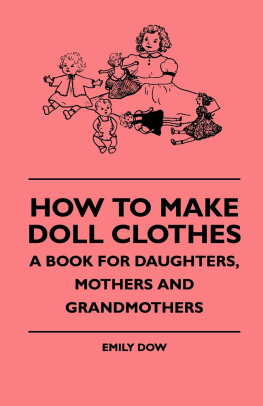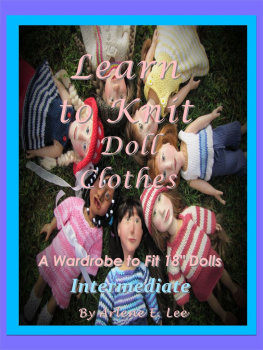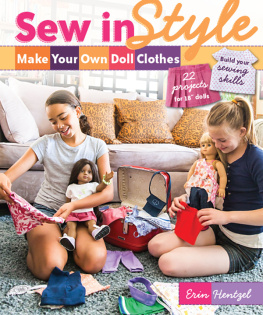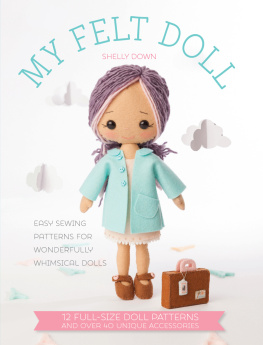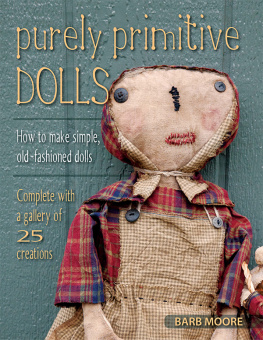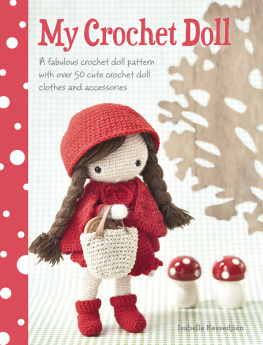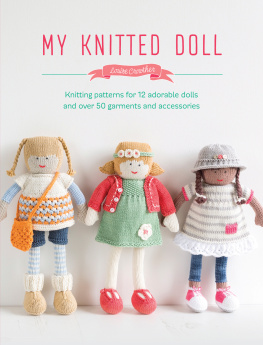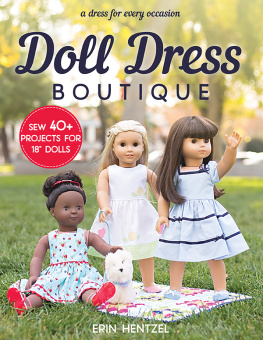
How To Make Doll Clothes
A Book for Daughters, Mothers, & Grandmothers
WRITTEN AND ILLUSTRATED BY
Emily R. Dow

Dedicated to my twin nieces
MARGARET and CARAINN
For whose dolls these clothes were
designed and made


CONTENTS
8. Daughter and Mother Outfit
(SKIRT AND BLOUSE)
CHAPTER ONE
The Doll Dressmaker
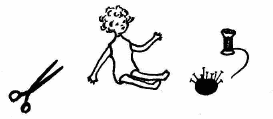
Ways to Use This Book
ITS SUCH FUN to dress a doll! And if you wish your doll to be as lovely as the one in the shop window, this book is for you. It is for the doll Mother, real Mother, Grandmother, or devoted Aunt who wants to sew doll clothesfor every girl, young or old, loves dolls.
Perhaps you belong to a club, a Girl Scout, Brownie, or Camp Fire Girl troop, or a neighborhood sewing group. If so, you will want to make doll clothes, dress puppets or marionettes, make a masquerade costume, even make simple clothes for yourself, or for a baby brother or sister. You may be too old to play with dolls but want the fun of dressing them for gifts, charity, the church fair, or to send abroad to a little girl who has no doll and would like to know how American boys and girls dress.
This book will show you that it is not necessary to buy a pattern. You will find it more fun to design your own. Anyone who knows how to sew can cut out and make dresses, coats, hats, costumes, and even shoes, from scraps of material found in the house.
If you know how to use a needle and thread, you will be able to follow the directions in this book, as they are written for both the young and the experienced sewer.
You may start at the beginning and go right through the book-making your doll family complete outfits. Or perhaps your doll has clothes but you want more for her. Look through the book and choose what you want to make. You may start at any chapter. Some of the clothes are more difficult to make than others, so if you are an inexperienced sewer it is best to start with something simplelike the dolls bathrobe. After you have made one garment and found how easy it is to sew for your doll, you will want to try other patterns.
Use your imagination in trimming and changing the design of a pattern. The pattern for boys pants can be used to make dungareesby cutting them ankle length; and a party dress can be made from the pattern for the brides dressby leaving out the sleeves and cutting the neck low. If you see a dress on another doll, or even a child, and want to copy it, look through this book and pick out a pattern that is cut basically the same way and add your own details. Its fun to copy dress designs this way.

Tools Needed
A good dressmaker must have the right tools with which to work. Her sewing box should contain needles of all sizes, thread (basting thread as well as thread to match the material), a thimble (be sure it fits), a pair of sharp scissors (keep the point stuck in the hole of a spool of thread when they are put away in the sewing box), a tape measure, and plenty of pinsboth safety and straight. A piece of chalk will be useful, but a pencil will do. You will find it easiest to work on a table. A card table makes a good place for cutting patterns. Have a waste-basket near, and make it a habit to toss there the threads and scraps to be thrown away.
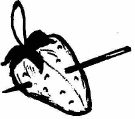
Useful Gadgets for the Experienced Sewer
There are many gadgets to help the dressmaker, but these are not absolutely necessary. A person who sews a great deal will find a pair of pinking shears useful. These scissors cut a sawlike edge which will not ravel. An emery bag will help when a needle is old and sticky, for a needle pushed through an emery bag will slip through the cloth more easily. And another useful item is a tape needle to run ribbons, tape, or elastic in garments. But a small safety pin will do the same job.
If you are an experienced sewer, you probably use a sewing machine. Be sure you are using the right length of stitch for each article you make. Small stitches will be needed for fine work, and larger ones to pull up for a gathering. Try out the attachments for tucking, hemming, and ruffling so you can use them in your dressmaking. And if you are lucky enough to own a buttonhole attachment, you will find it is wonderful for making those difficult buttonholes on material that ravels easily.
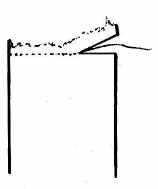
The Easiest Way to Cut and Sew
If your material is wrinkled, be sure to press it before you cut your pattern. Wool material should be pressed with a damp cloth over it. Silk or rayon should be pressed on the wrong sidewith a not too hot iron.
Be sure the edge of your cloth has been cut even. If the material has a pattern you can sometimes cut the cloth on an even line, using the pattern as a guide. Some material will tear straight. But when you are working on cloth with neither of these advantages, pull a thread close to the ragged edge (one that will go straight across the material), and cut along this line.
Most of the patterns in this book suggest drawing around the doll. If you are making underwear for her, be sure she wears no clothes when you mark your pattern around her. But when you are planning a dress, leave on her underwearso the dress will fit nicely over her slip and panties. Use pencil marks or chalk to draw your outlines, and cut after you have removed the doll from the cloth. If there is any question about how large to cut the garment, pin the seams of your outline before you cut, and try the pattern on the doll. It is always better to cut things too large and make them smaller when you find your mistake, than waste material by cutting too small a pattern.
To adapt the pattern to a child or adult size, take a garment that fits the person and lay it on the materialas you would the doll. (Be sure you have the correct measurements for shoulder seams, sleeve, waist, skirt, etc.)
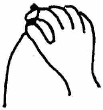
How to Make a Knot in Sewing Thread
Wind the end of the thread over the tip of your finger and hold it there with the thumb of the same hand. Now slip it off by sliding the thumb forward and the finger back: Pull the knot tight.

How to Measure Your Thread
Dont sew with too long a threador too short. It should be as long as your arm can stretchfrom your nose to your hand.
Next page
